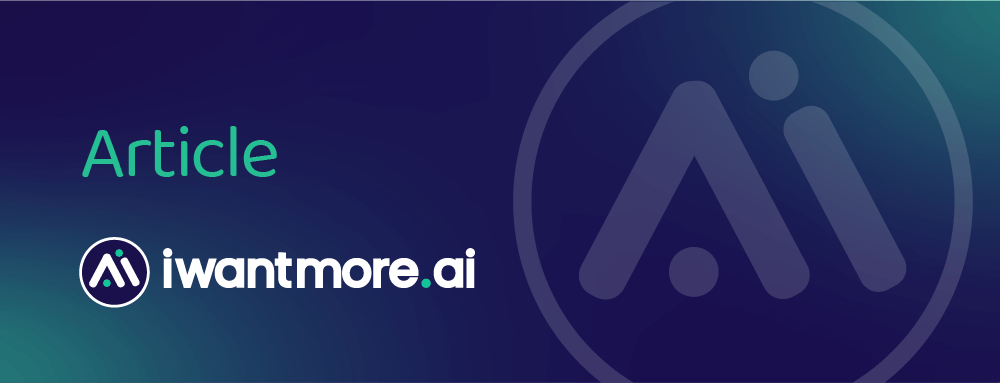
Shadow AI: the risk your business didn’t know it was taking
Listen to the audio version of this article:
AI tools have become indispensable for many businesses looking to boost productivity, creativity, and efficiency. Yet, lurking behind many official corporate policies (if they exist) is shadow AI.
Shadow AI refers to the use of unauthorised or unregulated AI tools by employees. While it may seem like an innocuous workaround, it can pose serious risks to organisations in terms of security, compliance, and operational effectiveness.
The unstoppable rise of shadow AI
Despite AI bans or in many cases the absence of clear guidelines, employees are adopting these tools en masse. They’re using them to streamline tasks, brainstorm ideas, and automate repetitive processes. Why? Because AI works. But without oversight, employees often gravitate towards free or consumer-grade tools that prioritise accessibility over security and performance. This creates a fragmented ecosystem of AI usage within organisations, where:
- Sensitive company data might be shared with unapproved platforms.
- Employees lack the training to use AI tools effectively.
- Organisations lose the ability to harness AI’s full potential at scale.
In essence, shadow AI isn’t just about employees breaking rules – it’s a symptom of organisations failing to provide the right tools and guidance.
The real cost of shadow AI
Shadow AI usage isn’t just about lost control; it comes with tangible risks:
- Data security: Free AI tools often come with unclear data usage policies, increasing the risk of breaches or misuse of sensitive information. In industries like healthcare and finance, this can be catastrophic.
- Inefficiency: Employees using unregulated tools might not be getting the most accurate or actionable insights, leading to suboptimal outcomes.
- Knowledge gaps: Without proper training, employees often use AI inefficiently, resulting in wasted time and a lack of trust in AI’s potential.
- Compliance issues: In sectors with strict regulatory requirements, the unauthorised use of AI could lead to significant legal repercussions.
Organisations that fail to address shadow AI risk falling behind competitors who embrace AI in a strategic and controlled manner.
How to address shadow AI: time for an AI amnesty?
Banning AI isn’t the answer. Employees are already using it, and outright prohibitions only push usage further underground. Instead, leaders should adopt a proactive approach to mitigate risks and empower employees:
- Acknowledge reality: Accept that AI is here to stay, and shadow AI will persist without clear alternatives. Recognising this reality is the first step toward addressing it effectively.
- Create clear AI policies: Develop clear, practical guidelines for AI use. Outline approved tools, permissible data-sharing practices, and prohibited behaviours.
- Invest in enterprise solutions: Offer secure, enterprise-grade AI tools that meet the needs of your workforce while protecting company data.
- Train your team: Equip employees with the skills to use AI responsibly and effectively. This includes guidance on ethical AI use, advanced prompting techniques, and integration with workflows.
- Foster a culture of innovation: Encourage employees to explore how AI can drive value for the organisation. When employees feel supported in their AI usage, they’re less likely to turn to shadow AI.
From shadow AI to strategic AI
The rise of shadow AI is a sign that employees recognise the value of AI but lack the official resources and support to use it safely and effectively. Rather than viewing shadow AI as a problem to eradicate, see it as an opportunity to help accelerate your organisation’s AI adoption.
By addressing the risks of shadow AI head-on and empowering employees with the right tools and training, you can transform a hidden liability into a competitive edge.
The question isn’t whether your employees are using AI – it’s whether they’re using it in a way that benefits your business.
We are a UK based AI consulting firm who support organisations to work with their teams to uncover their shadow AI and help them implement AI in a responsible and controlled manner. Contact us to see how we have helped other businesses overcome this challenge.
Other AI articles you may be interested in:

At iwantmore.ai, we help businesses navigate the world of AI. One of the persisting challenges we see is the perception by some people that using AI is 'cheating.' Despite AI’s proven advantages, some professionals still feel uneasy about embracing it leading to a culture where employees secretly use AI tools to avoid judgment.

Every company seems to want to use AI. According to Cisco’s second annual AI readiness report, 98% of executives felt an increased urgency to deliver on AI. Many businesses are already implementing it in some way, but based on the findings of the RAND report, more than 80% of AI projects fail.

Every few days, a new AI model seems to drop from one of the big AI companies. But as a normal person, how do you work out whether a new AI model is actually better than what you were using before? In this article we look at ways in which you can test out which model is most applicable for your business needs.

From boardrooms to marketing teams, leaders in businesses are being told they need AI to stay competitive. But amid the hype and noise, one crucial question often gets overlooked - what’s the actual return on investment (ROI)? Is it all worth the effort?

We take a look at the various ChatGPT modules and find out which ones best suited for what business tasks. We look at GPT-4o, GPT-4o Mini, GPT-4, OpenAI o1, OpenAI o1 Mini, OpenAI o1 Pro Mode, OpenAI o3 Mini and look at what they are best for, their purpose and how you access these models.

There’s still some confusion as to what an AI agent actually is. In many cases it’s probably still just simple automation with a fancy name. But at the more sophisticated end of the spectrum, these autonomous systems have the potential to change the way businesses operate.
iwantmore.ai – The AI consulting firm that helps you build a smarter business
Wherever you are with your AI implementation initiatives, we have a range of stand-alone AI quick start services to help you fast track the transformative benefits of AI across your business.



